27 design landmarks everyone should see
These architectural marvels will take your breath away.
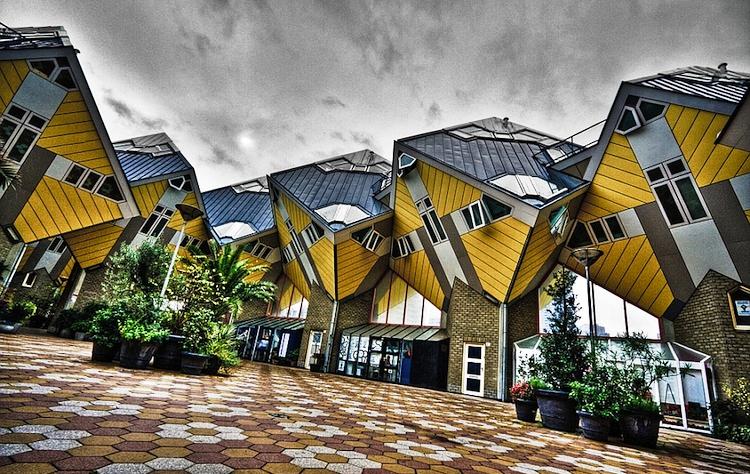
When looking for design inspiration, it’s common to look at other people’s work. You can find inspiration in anything from pencil drawings and sketches through to vintage posters. But sometimes it’s good to mix things up a bit.
Have you ever been hit with a bolt of creative inspiration just by walking down the street? Next time you’re out in town, look up, take a big step back (watching out for traffic of course) and look at the bigger picture. We’re talking architecture – design that’s all around us every day, and most of the time we don’t even notice it.
In this article we pay tribute to 27 of the most beautiful, unique, weird and wonderful design-related landmarks around the world. Get ready to be inspired by bricks and mortar. And if this whets your appetite, check out our further list of famous buildings to inspire you.
01. Centre Georges Pompidou
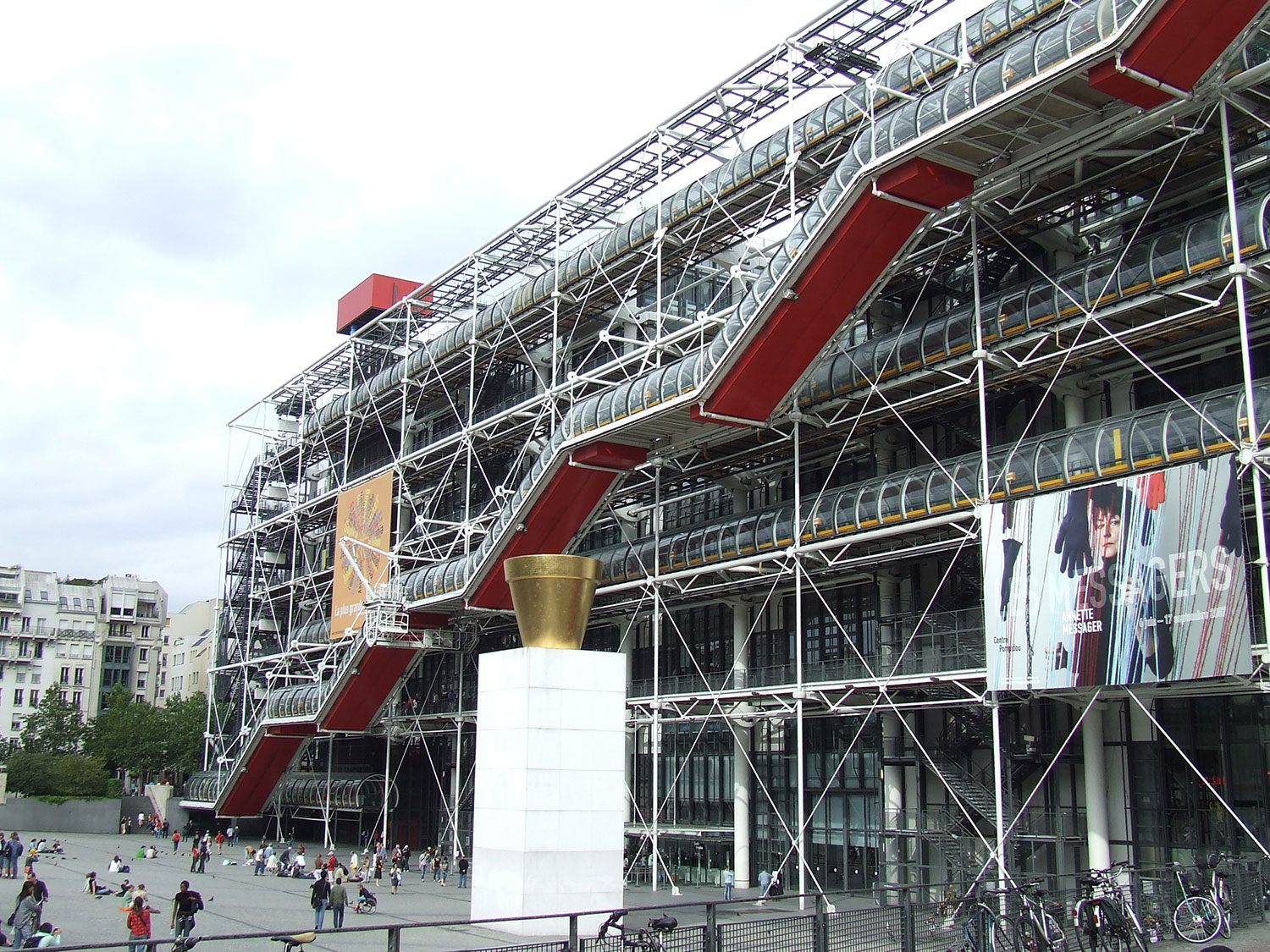
- Location: Paris
Designed by Italian architects Renzo Piano and Gianfranco Franchini, and British architect Richard Rogers, the Pompidou Centre, with its exposed plumbing, ducting and wiring setting it well apart from the more traditional and conservative surrounding buildings, wasn't initially a hit with the people of Paris.
Its striking, skeletal looks soon made it one of Paris' most famous landmarks and cemented Rogers' reputation as a high-tech and avant-garde architect, while demonstrating that museums didn't have to be dusty old buildings.
02. Faisal Mosque
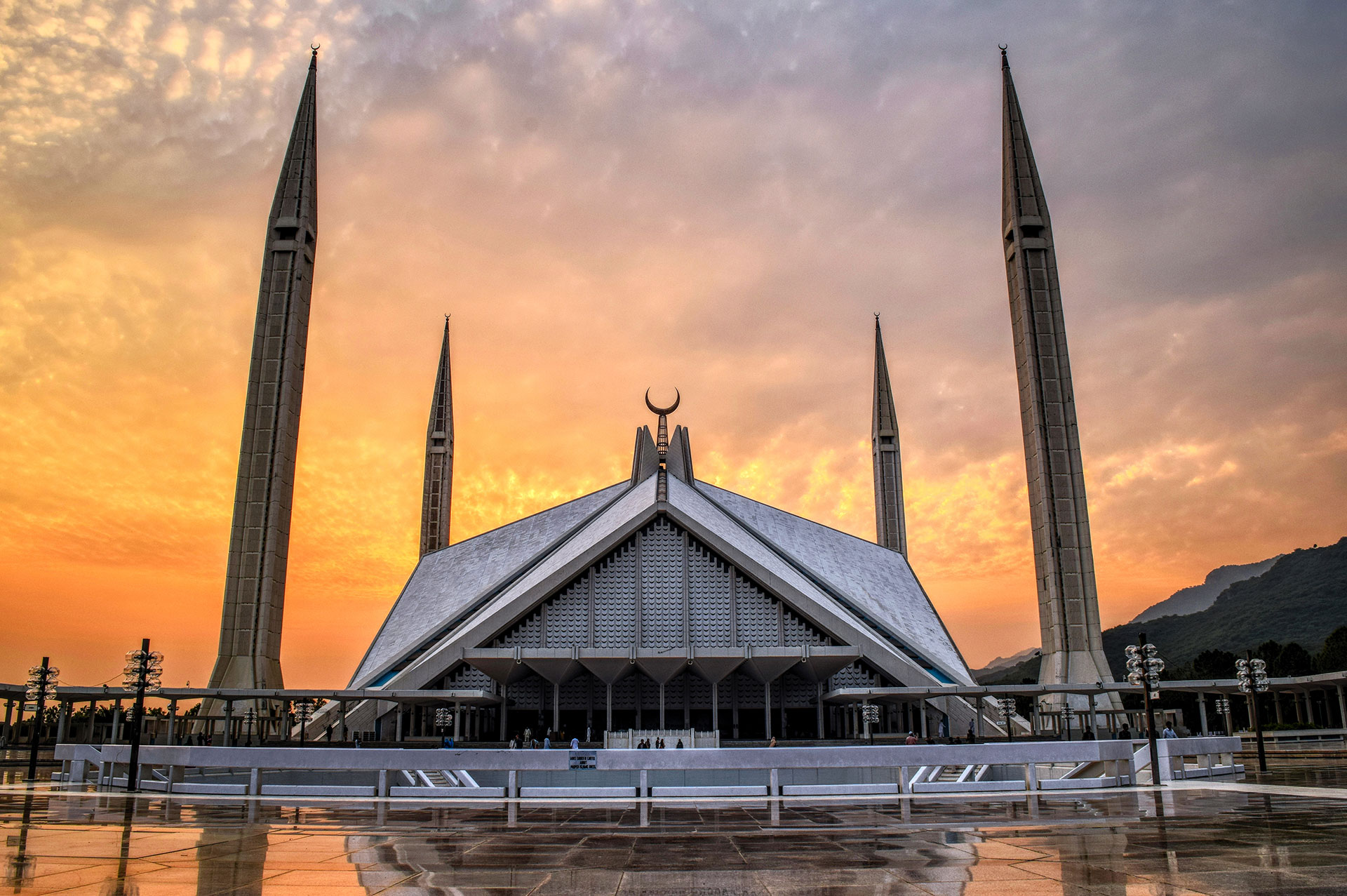
- Location: Islamabad, Pakistan
When it was completed in 1986, Islamabad's Faisal Mosque was the largest mosque in the world and remained so until 1993. It's now the fourth largest in the world, but its elevated position in the foothills of the Himalayas allows it to be seen from miles around. Designed by Turkish architect Vedat Dalokay in a contemporary Islamic style, its main building is inspired by a Bedouin tent and its four thin minarets take their design from Turkish tradition. Unlike most mosques it lacks a dome and it came in for criticism when the design was revealed; however when the mosque's scale and stunning setting became apparent it quickly gained approval.
03. Cubic Houses
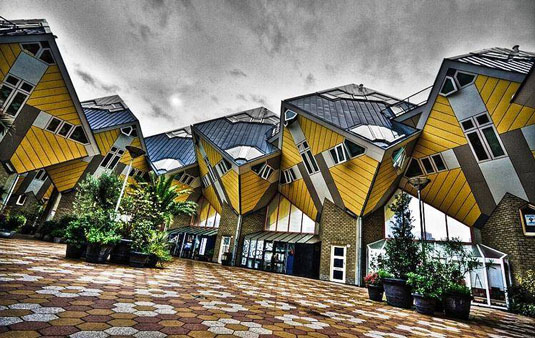
- Location: Rotterdam, Netherlands
The Cubic Houses, or Kubuswoningen, are an architectural wonder designed by Dutch architect Piet Blom in the 1970s. By tilting the cube of a conventional house 45 degrees, and resting it upon a hexagon-shaped pylon, Blom create high-density housing with sufficient space on the ground level.
Get the Creative Bloq Newsletter
Daily design news, reviews, how-tos and more, as picked by the editors.
The design is both practical and innovative. Inside, the houses are divided into three levels accessed via a narrow staircase. The lower level is a triangular area used as the living room. The middle level houses the sleeping and bathing area, and the highest level is a spare area used either as a second bedroom or another living area.
According to Blom the triangular top represents a tree and when the houses are placed together they combine to make an abstract manufactured forest. One house, Kijk-Kubus, is a specifically designated a museum where you can see what living in one of these houses is like
04. Waldspirale
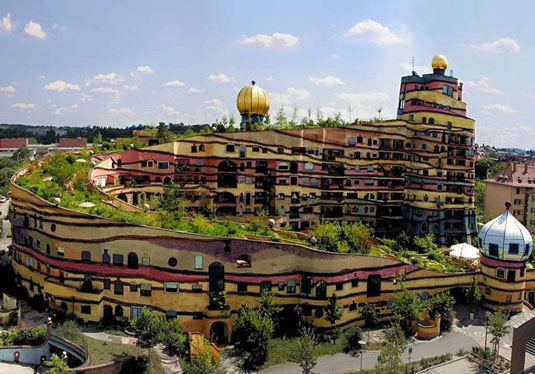
- Location: Darmstadt, Germany
Designed by Austrian artist Friedensreich Hundertwasser, who is known primarily for his flamboyant art, this residential complex in Germany is designed with the expressed aim of avoiding straight lines.
The Waldspirale ('forest spiral') houses as many trees as people with a large variety of species including beech on the roof. No two windows are the same and Hundertwasser even tiled some of the bathrooms himself.
05. Dali's Museum and Torre Galatea
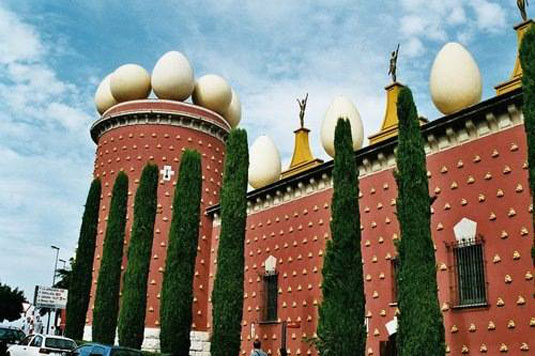
- Location: Figueras, Catalonia, Spain
The Dali Theatre and Museum (Teatre-Museu Dalí) and its annexe, (Torre Galatea) in Figueres, Spain has a very striking architecture topped with distinctive egg-shaped sculptures. There used to be an old theatre on the very same spot but it was burned down during the Spanish Civil War. However Dali, who grew up in the small town, wished to resurrect it and displayed his first exhibition in this building.
It's worth a visit just for the building itself, plus it houses the largest collection of Dali’s work and a crypt in which Dali is buried.
06. The Beijing National Stadium
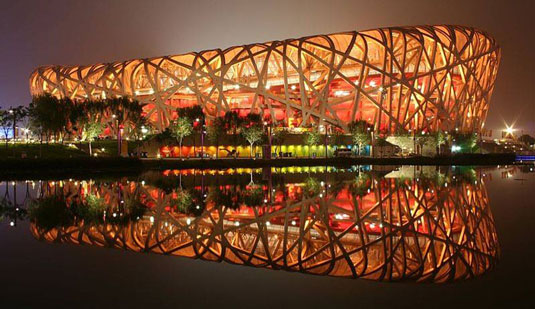
- Location: Beijing, China
A unique design produced as a collaborative architectural venture, which included artists like Ai Weiwei, the stadium known as the 'bird's nest' stood at the heart of the 2008 Olympics. With a capacity of 80,000 and an impressive retractable roof, this architectural gem now hosts sporting events, operas and ballet performances. At night it's a feast for the eyes, lighting up the sky above the Chinese capital.
07. Hallmgrimskirkja
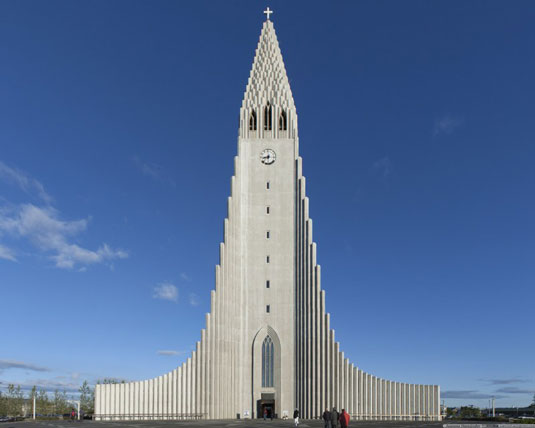
- Location: Iceland
Hallmgrimskirkja is a Lutheran (Church of Iceland) parish church in Reykjavík, Iceland. In contrast with the rest of the brightly coloured, low-rise city, it seizes attention with its modern starkness and domineering height. Architect Guðjón Samúelsson is said to have designed it to resemble the basalt lava flows of Iceland's otherworldly landscape. At 244ft, it's visible throughout the capital and is also used as an observation tower.
08. Grand Lisboa
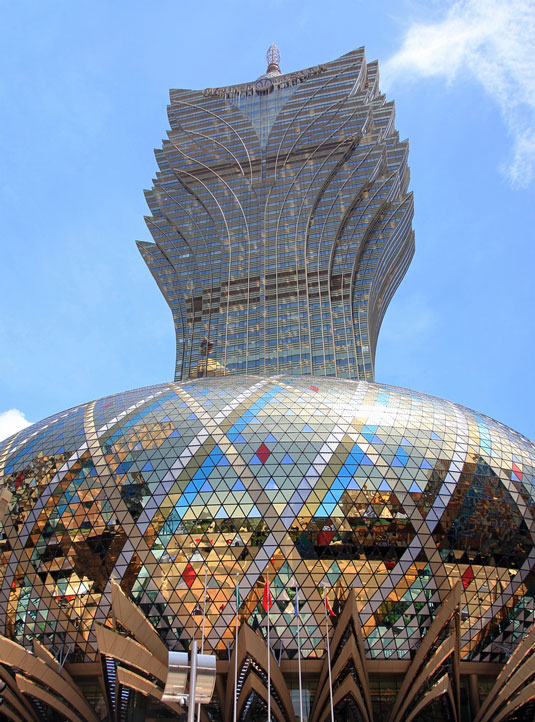
- Location: Macau, China
Designed by Hong Kong architects Dennis Lau and Ng Chun Man, the Grand Lisboa Hotel and Casino is probably the largest building in the world that looks like a pineapple.
That might not be something to be particularly proud of, but it has certainly made it one of the most distinctive landmarks in the world. Just to give you an idea of its size, the casino offers 800 mass gaming tables and 1,000 slot machines, while the hotel contains 430 hotel rooms and suites.
09. Sydney Opera House
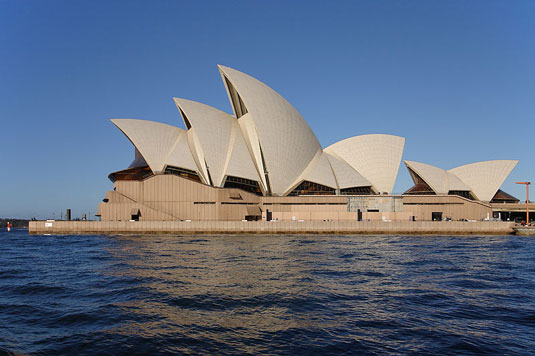
- Location: Sydney, Australia
Sydney Opera House has become synonymous with Australia and is considered one of the best architectural achievements of the 20th century.
The house was actually designed by a Dane called Jorn Utzon who won the competition to build the national opera house in 1957. Although some believe that the unusual shaped roof is designed to resemble the sails of a ship, others argue that the roof is designed to resemble an orange that's been carefully sliced open.
10. Casa Batllo
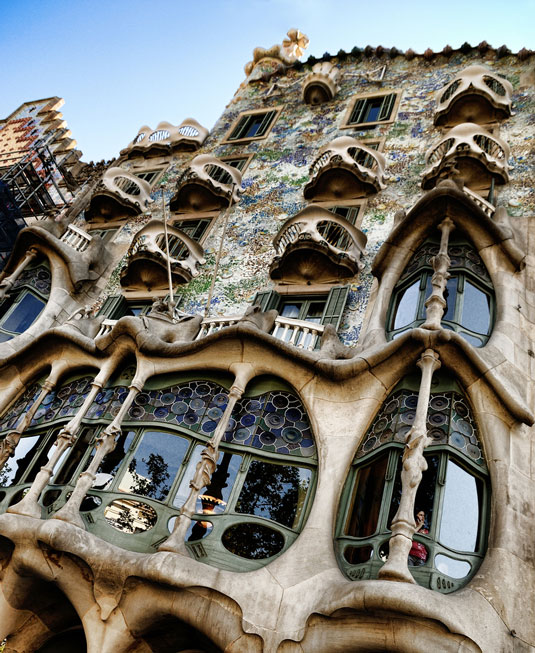
- Location: Barcelona, Spain
Spanish architect Antoni Gaudi has left his distinctive mark all over Barcelona and beyond with his groundbreaking designs. One of his most famous achievements is Casa Batllo, Barcelona, which is a famous landmark in the city and among the most iconic symbols of the Art Nouveau movement.
The unique design is not just external: it’s just as extravagant inside. Locally the building's name can be translated to 'House of Bones' owing to its organic, almost skeletal look.
11. St Vitus Cathedral (Mucha's window)
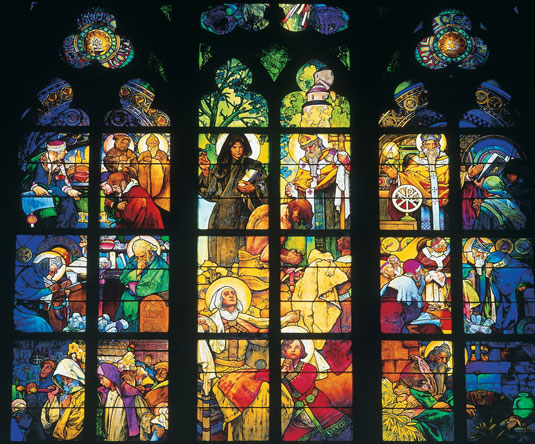
- Location: Prague, Czech Republic
Although St Vitus Cathedral in Prague, Czech Republic, is impressive enough in itself, it's made much more impressive by the stained glass window designed by artist and designer Alphonse Mucha, who was at the forefront of the Art Nouveau movement.
The stained glass window, which was added to the cathedral in 1931, is a perfect reflection (if you’ll excuse the pun) of his other design work.
12. Bauhaus
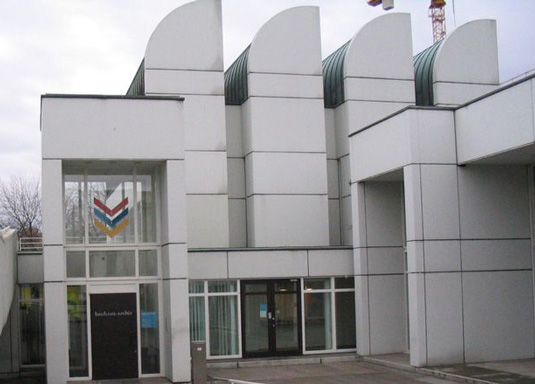
- Location: Klingelhoferstrasse 14, Berlin, Germany
The 'Bauhaus style', associated with a school in Germany that combined crafts and the fine arts and operated from 1919 to 1933, is one of the most influential movements in modern design. The Bauhaus itself might not be the most impressive or interesting of buildings to behold, but it has a history of making significant contributions to design and so is a must-see on any design enthusiast’s list.
13. 41 Cooper Square
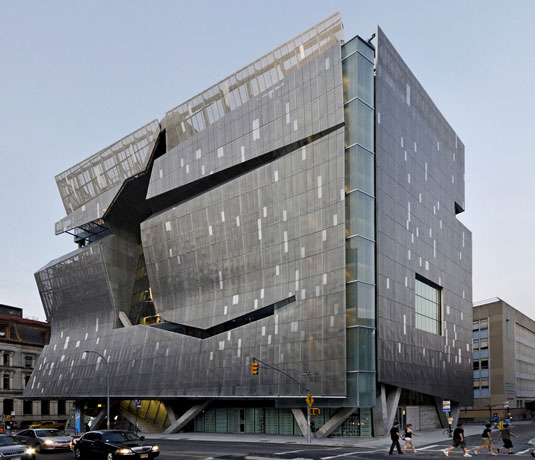
- Location: New York City
Architect Thom Mayne is behind the funky looking building in New York, which is part of Cooper Union. Mayne went to some painstaking detail when designing the functionality of the building: in order to move between the sixth and seventh floors, you must use the fire stairs. This is a deliberate move, designed to increase meeting opportunities.
14. La Pyramide Inversée
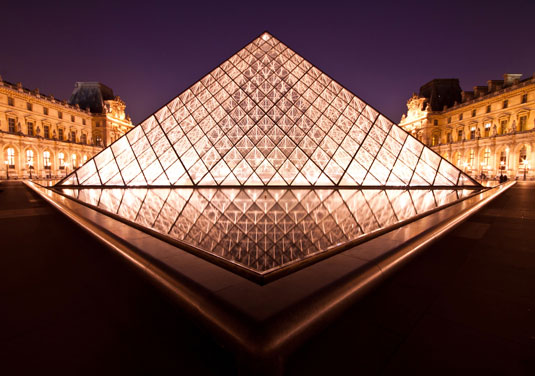
- Location: Paris, France
The Louvre Museum's most unique feature is the glass pyramid of ‘La Pyramide Inversée’ (meaning ‘The Inverted Pyramid). The Inverted Pyramid and the two smaller pyramids either side of it were designed by architect IM Pei in order to reinvigorate the Louvre Palace, and it seems they have done just that; by 2002, attendance had doubled.
15. Guggenheim Museum, Bilbao
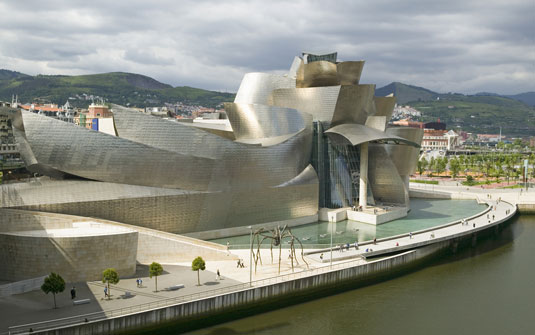
- Location: Bilbao, Spain
This Spanish museum is internationally renowned as one of the most admired works of contemporary architecture. In the words of its website, it 'continues to challenge assumptions about the connections between art, architecture, and collecting’. It was built by California-based Canadian-American architect Frank Gehry, who was chosen via an architectural competition to design the building.
16. Atomium
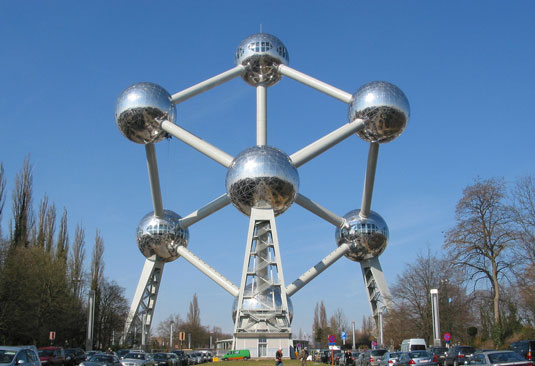
- Location: Brussels, Belgium
An iconic symbol of Brussels, the Atomium represents an elementary iron crystal enlarged 165 billion times. It was built in 1958 for the World Fair of Brussels and was never intended to make it past 1959, but it soon became a key landmark of the city, and so it remained.
17. Lotus Temple, India
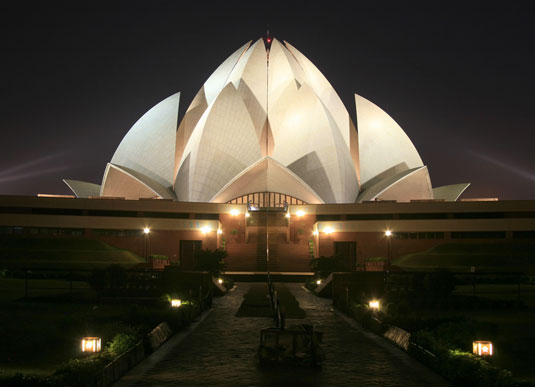
- Location: New Delhi, India
The Lotus Temple is a house of worship for the Bahá'í religion and earns its name for its flower-like shape (the lotus being a sacred flower for many Indian religions). This tied in nicely with the fact that the building had to be a nine-sided circular shape, which is a specified requirement for a religious building according to Bahá'í scripture.
18. Apple Store Fifth Avenue

- Location: New York City, New York, USA
On Fifth Avenue, this is Apple’s flagship store. The Louvre-like structure was opened in 2006 and hailed as a model for innovative design. But it came at a cost; Apple recently spent an estimated $6.6 million renovating the glass cube.
19. The Burj al Arab Hotel, Dubai

- Location: Dubai, United Arab Emirates
This luxury hotel, built on an artificial island, was designed to resemble the sail of a dhow. It was designed by architect Tom Wright, who says: "The client wanted a building that would become an iconic or symbolic statement for Dubai… It needed to be a building that would become synonymous with the name of the country.” And the instantly recognisable, elegant shape of the building has done just that.
20. La Sagrada Familia, Barcelona
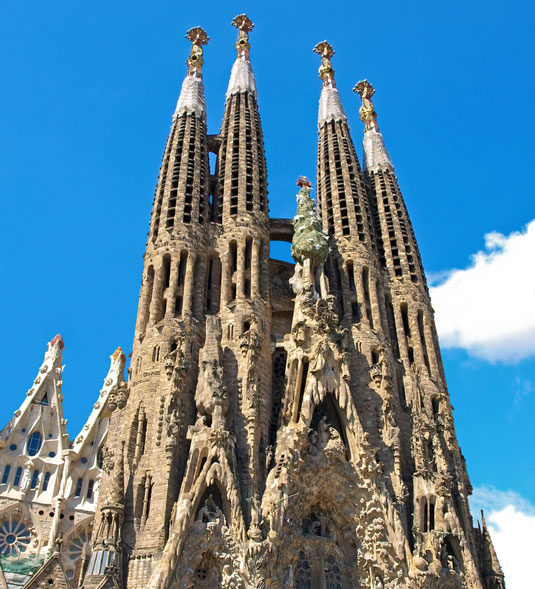
- Location: Barcelona, Spain
Another of Gaudi's quirky and creations. Gaudi sadly never saw this amazing church finished. He died in 1926 when less than a quarter of the project was complete.
The building is in fact still not finished and currently has an estimated completion date of 2026. On the subject of the very long construction Gaudi is reported to have said: 'My client is not in a hurry.'
21. Jay Pritzker Pavilion
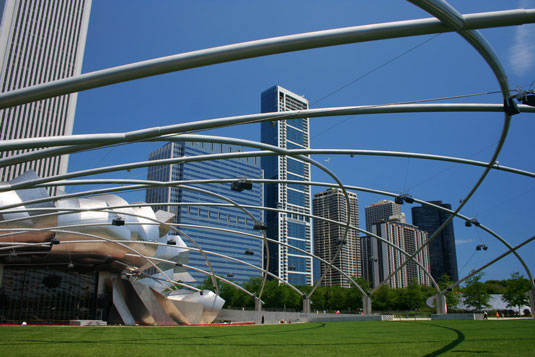
- Location: Chicago, USA
The Jay Pritzker Pavilion in Chicago is one of the most unusually designed in the world. Designed by Frank Gehry to function as an outdoor performing arts venue for small events, it is classified by the city as a work of art rather than a building; this is a legal loophole to overcome the historic limitations on the height of the buildings in Grant Park.
22. Cloud Gate
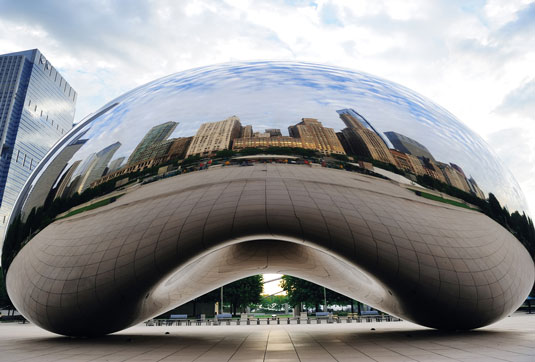
- Location: Chicago, Illinois, USA
Cloud Gate is the centrepiece of the AT&T Plaza in Millennium Park, Chicago, and was designed by Indian-born British artist Anish Kapoor. The design of Cloud Gate was inspired by liquid mercury. The idea was that as visitors walked around the sculpture, its surface would act as a fun-house mirror and distort their reflections as well as that of the Chicago skyline. Computer modelling was essential in the engineering of its construction even though Kapoor does not draw with computers.
23. Walt Disney Concert Hall, Los Angeles
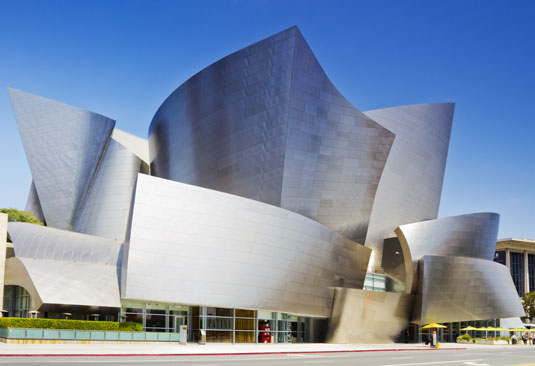
- Location: Los Angeles, California, USA
Frank Gehry and his unusual architectural designs have popped up worldwide. In Los Angeles he is responsible for the Walt Disney Concert Hall. The building aims to be a sculpture and a work of art whilst also retaining all the functionality of a concert hall.
24. N Building Tokyo
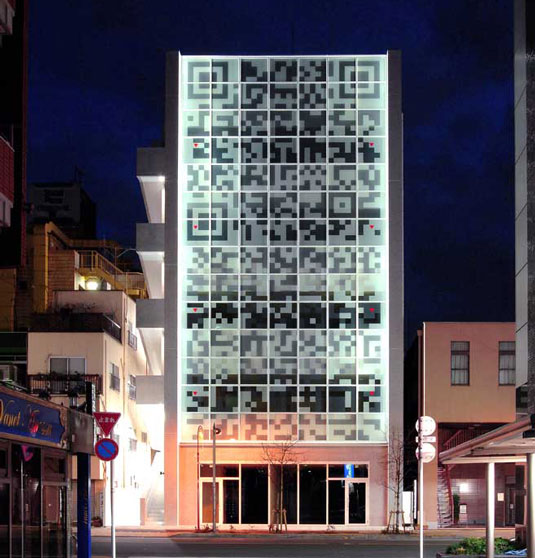
- Location: Tokyo, Japan
Situated in the middle of one of Tokyo’s shopping districts, the N Building is a commercial building that is adorned with a QR code as the facade. When scanned, the code leads to a site detailing information about the stores inside.
When scanned with the iPhone, as well as browsing shop information, you can also make reservations and download coupons. The unusual exterior of the building makes a statement at the same time as being functional.
25. The Crooked House, Poland
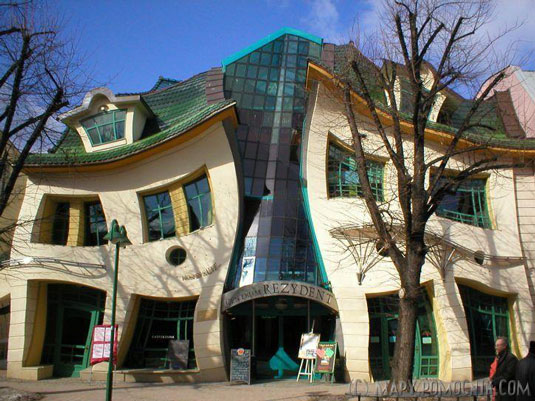
- Location: Sopot, Poland
The ‘Krzywy Domek’ (Crooked House’ in Polish) is a rather wonky looking building, and therefore aptly named. The source of inspiration for its design was in the fairytale illustrations and drawings by Polish illustrator Jan Marcin Szancer and Swedish painter Per Dahlberg.
26. Experience Music Museum, Seattle
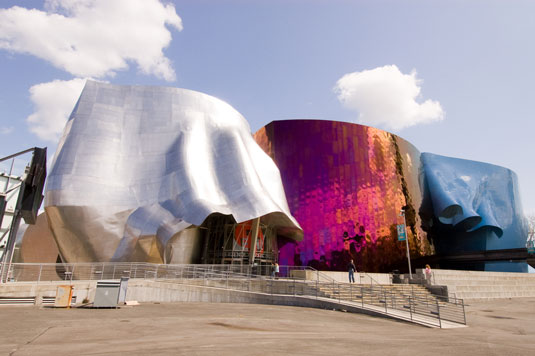
- Location: Seattle, Washington, USA
This quirky museum dedicated to the history of popular music and science fiction was designed by Frank Gehry, although it definitely wasn’t his proudest moment. New York Times architecture critic Herbert Muschamp described it as “something that crawled out of the sea, rolled over, and died”. He was not alone in his distaste for the museum; Forbes magazine named it one of the world’s 10 ugliest buildings. It is also locally known as ‘The Hemorrhoids’.
27. Kunsthaus Graz
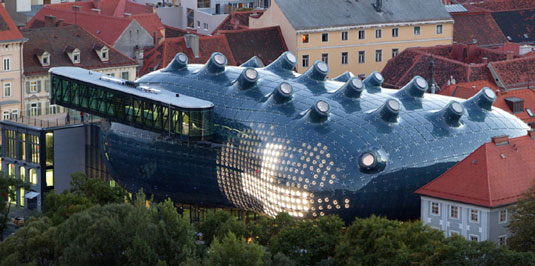
- Location: Graz, Austria
Continuing along the theme of blobs, this landmark in Austria is dedicated to contemporary art. The facade of the museum comprises of an acrylic glass ‘skin’ on the eastern side of the building representing an oversized urban screen, which is intended to act as an instrument of art communication to the public.
Related articles:

Thank you for reading 5 articles this month* Join now for unlimited access
Enjoy your first month for just £1 / $1 / €1
*Read 5 free articles per month without a subscription

Join now for unlimited access
Try first month for just £1 / $1 / €1
